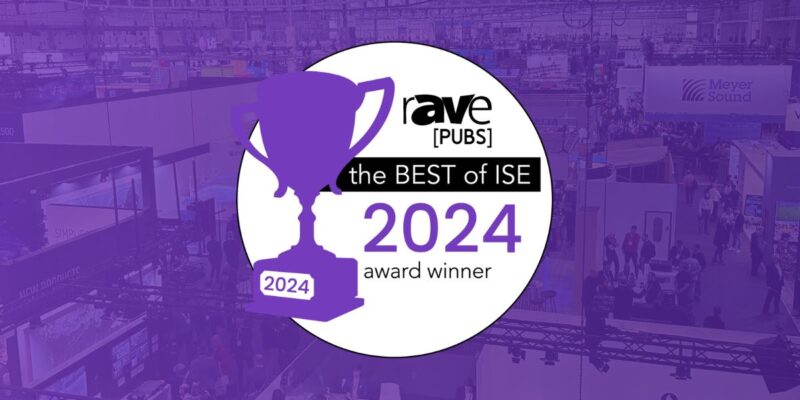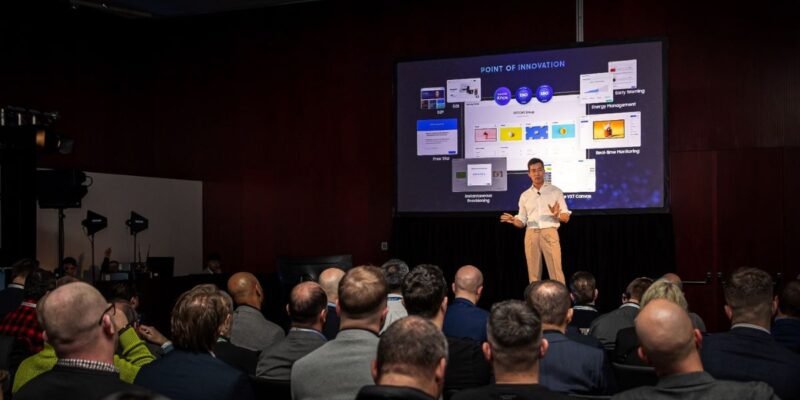Samsung Mirror Displays and Exercise Displays
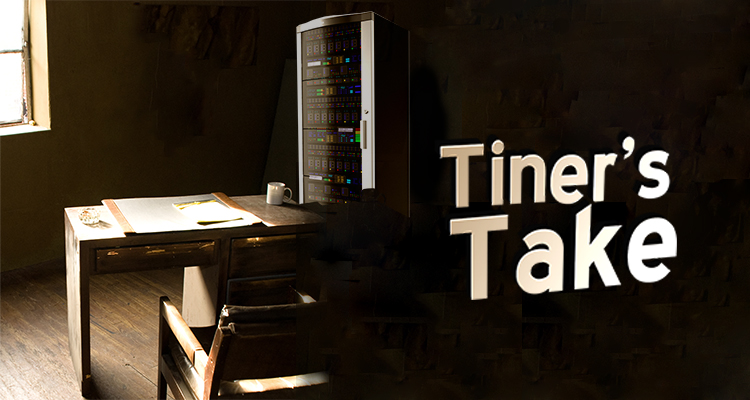 As I traveled around South Korea in March, digital signage was everywhere, much like it is in any large city. I saw a couple examples of it in places that I have not experienced them in the United States. In one restaurant we were in, each table that was on a wall had a digital sign mounted on the wall. It was, obviously, in Korean so I was not completely sure what I was looking at. It appeared to be some type of Korean soap opera that was playing. However, the commercials were targeted to the customer in the restaurant. That is, they advertised a specific type of beer the restaurant was selling along with images of meals that could be ordered.
As I traveled around South Korea in March, digital signage was everywhere, much like it is in any large city. I saw a couple examples of it in places that I have not experienced them in the United States. In one restaurant we were in, each table that was on a wall had a digital sign mounted on the wall. It was, obviously, in Korean so I was not completely sure what I was looking at. It appeared to be some type of Korean soap opera that was playing. However, the commercials were targeted to the customer in the restaurant. That is, they advertised a specific type of beer the restaurant was selling along with images of meals that could be ordered.
As I mentioned last month though, some of the coolest things I was able to experience was at Samsung D’Light. In addition to the menu signs that I wrote about last month, two other things really stuck out for me.
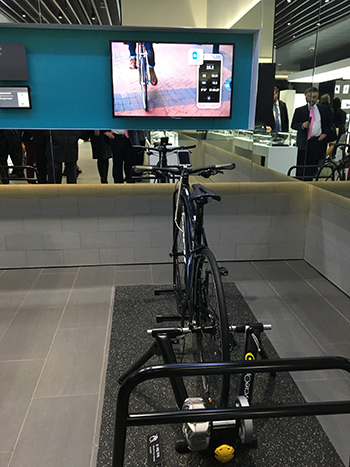 The first was the digital signage that centered around exercise. They had a stationary bicycle setup on the showroom floor. The display in front of you allowed you to choose where you were riding your bike. Along with being able to look at something other than a wall, the bike interacted with what you were watching. If you were going uphill you needed to shift gears and pedal harder. If you were going downhill you could coast. Personally, I am not a fan of biking at all. I enjoy running and have long thought about how interesting it would be if you could have such technology for the treadmill. I bore myself to death when I try and run on the treadmill in the winter. However, if I were able to say, jog around Seoul, or Paris or New York’s Central Park virtually, I may find it even more interesting. If you wore a Samsung smartwatch the display would also show some of your health metrics, such as heart rate.
The first was the digital signage that centered around exercise. They had a stationary bicycle setup on the showroom floor. The display in front of you allowed you to choose where you were riding your bike. Along with being able to look at something other than a wall, the bike interacted with what you were watching. If you were going uphill you needed to shift gears and pedal harder. If you were going downhill you could coast. Personally, I am not a fan of biking at all. I enjoy running and have long thought about how interesting it would be if you could have such technology for the treadmill. I bore myself to death when I try and run on the treadmill in the winter. However, if I were able to say, jog around Seoul, or Paris or New York’s Central Park virtually, I may find it even more interesting. If you wore a Samsung smartwatch the display would also show some of your health metrics, such as heart rate.
The second thing that struck me was Samsung’s mirror display. This was particularly interesting to me because I was not even aware of what I was looking at initially. I genuinely thought I was looking at a mirror. However, as I looked more carefully I realized that it was actually a display. This technology has an incredible amount of potential. In a clothing store it allows you to look at yourself, like you would in a regular mirror, but also provides you with other information. It could, for example, provide you with a total cost of the clothing that you are wearing. It could, read the colors of the clothing you like and make suggestions for other things in the store. Perhaps if it was a blue suit you were trying on, you could interact with the touch display and have it show you what that suit would look like as a pinstripe. It could then even tell you if that pinstripe suit is available in the size that you are currently trying on. Do you like that pin stripe suit? How about you press a button on the display and one of the customer service people in the store bring you the pin stripe suit to try on?
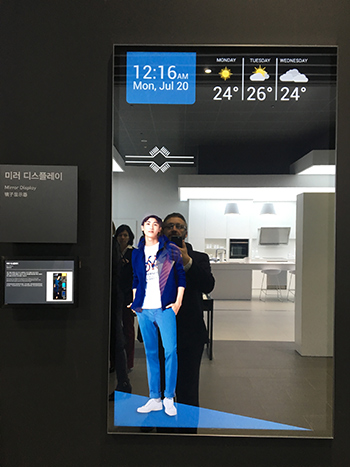 When I look at new technology I try to look beyond the coolness factor. Yes, this usually takes a few minutes, I admit, I love the coolness factor. But, to make sense for a commercial enterprise the technology needs to provide value to both the customer and the merchant. In both of these cases the value is provided. In the exercise bike example it provides customers (likely at a paid gym) to have more dedication to exercising because they are more interested. This provides value for the gym by bringing in more customers and retaining those customers. The digital mirror display provides a customer value because it makes their shopping experience more interactive and potentially provides them with outfits and designs they may not have thought of themselves. Essentially, it could provide a customer with a virtual fashion assistant. It helps the merchant, because they are able to drive a customer to specific items they want to sell. In the example of the pin stripe suit, the merchant would be able to have the option of NOT showing that pin stripe suit if it already knew one was not in stock. Rather, it could show a suit that IS in stock and could be sold that day. Providing value for both the retailer and the customer is a winning combination.
When I look at new technology I try to look beyond the coolness factor. Yes, this usually takes a few minutes, I admit, I love the coolness factor. But, to make sense for a commercial enterprise the technology needs to provide value to both the customer and the merchant. In both of these cases the value is provided. In the exercise bike example it provides customers (likely at a paid gym) to have more dedication to exercising because they are more interested. This provides value for the gym by bringing in more customers and retaining those customers. The digital mirror display provides a customer value because it makes their shopping experience more interactive and potentially provides them with outfits and designs they may not have thought of themselves. Essentially, it could provide a customer with a virtual fashion assistant. It helps the merchant, because they are able to drive a customer to specific items they want to sell. In the example of the pin stripe suit, the merchant would be able to have the option of NOT showing that pin stripe suit if it already knew one was not in stock. Rather, it could show a suit that IS in stock and could be sold that day. Providing value for both the retailer and the customer is a winning combination.


